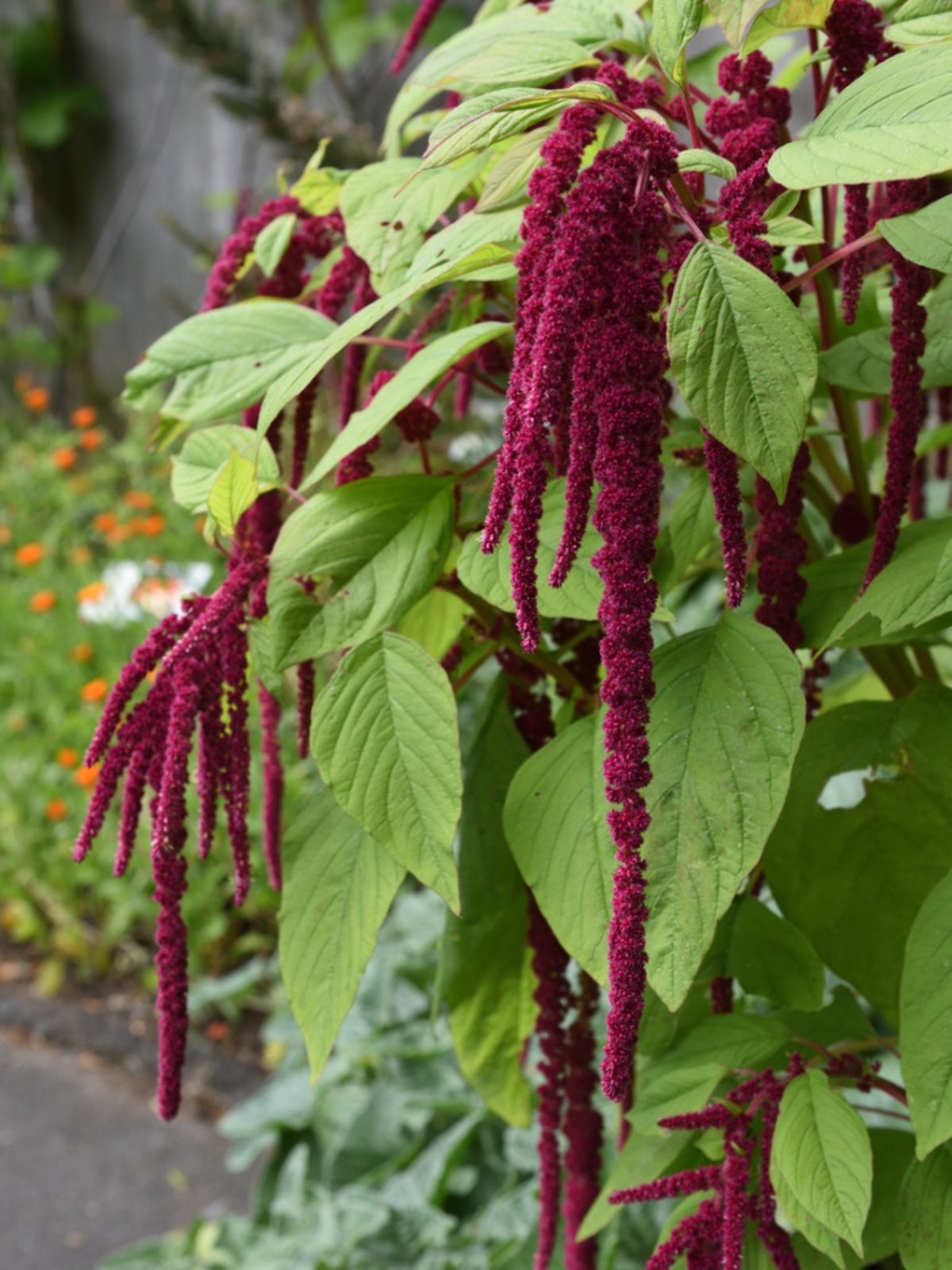Learn More About Love Lies Bleeding Care


Growing love lies bleeding (Amaranthus caudatus) can provide an unusual, eye-catching specimen in garden beds or borders. Drooping panicles of deep red to crimson purple appear as the love lies bleeding flower blooms in summer. The love lies bleeding flower, also called tassel flower, is an interesting way to utilize open space without a perennial commitment.
Tips for Growing Love Lies Bleeding
Love lies bleeding care is minimal after the seeds sprout. Until seedlings are actively growing, they should be kept consistently moist. Once established, the love lies bleeding plant is somewhat drought-resistant and needs little looking after until seeds develop. Love lies bleeding plant should be planted in full sun after the soil has warmed. Gardeners with short growing seasons may want to start seeds indoors or purchase seedlings, as growth and flowering in maturity may take the better part of the season. Love lies bleeding plant can reach 5 feet (1.5 m.) in height and 2 feet (61 cm.) across, adding bushy texture in the landscape. Perennial performance may occur from this plant in areas that do not experience frost.
Cultivars of the Love Lies Bleeding Flower
The foliage of the love lies bleeding plant is an attractive pale green in many cases. The love lies bleeding Amaranthus cultivar ‘Tricolor' has striking, multi-colored foliage and is sometimes called ‘Joseph's Coat'. 'Viridis' and ‘Green Thumb' cultivars of the love lies bleeding flower offer green tassels. Growing love lies bleeding in the landscape attracts butterflies and numerous pollinators. The love lies bleeding flower is long lasting and has the best color when planted in poor soil. If there is no spot in the landscape to accommodate this large annual flower, the love lies bleeding flower can be grown in containers and is particularly attractive in hanging baskets. Tassels of the love lies bleeding plant may be used in dried arrangements as well. The exception to minimal love lies bleeding care is removing seeds before they spill to the ground and create a plethora of love lies bleeding. Amaranthus, of which this plant is a family member, is sometimes said to be invasive and even noxious in some areas. If prolific sprouting occurs next year, weed out the seedlings before they become established.
Gardening tips, videos, info and more delivered right to your inbox!
Sign up for the Gardening Know How newsletter today and receive a free copy of our e-book "How to Grow Delicious Tomatoes".

Becca Badgett was a regular contributor to Gardening Know How for ten years. Co-author of the book How to Grow an EMERGENCY Garden, Becca specializes in succulent and cactus gardening.
-
 Moody Blooms For Spring: 8 Types Of Black Flowers To Add Drama To Spring Displays
Moody Blooms For Spring: 8 Types Of Black Flowers To Add Drama To Spring DisplaysFrom midnight burgundies to inky violets, several types of black flowers can enrich and embolden a spring display. Try these brooding bloomers for a moody garden
By Tonya Barnett
-
 My Homemade Orchid Fertilizer Always Brings More Blooms – Here's The Easy Recipe That Transforms Plants
My Homemade Orchid Fertilizer Always Brings More Blooms – Here's The Easy Recipe That Transforms PlantsScientist-turned-gardener Mary Ellen Ellis shares her tried-and-tested DIY orchid fertilizer recipe, plus more ingredients to try for healthy, happy plants.
By Mary Ellen Ellis